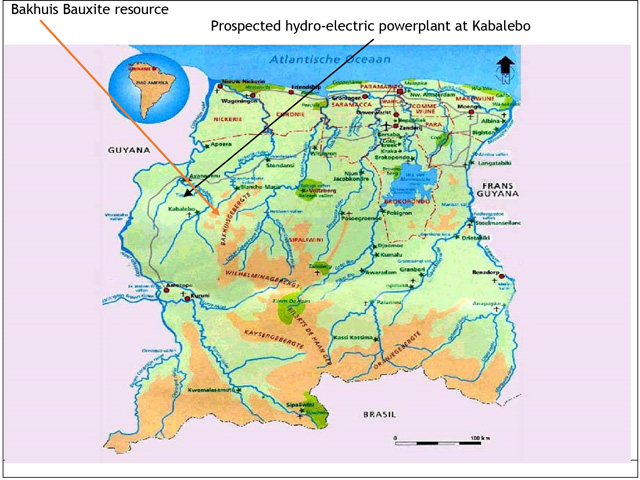History of the GMD and BIS
Although mining has played an important role in the Surinamese economy since the nineteenth century, the sector did not get its own Government service until the 1940s. On December 14, 1943, the decision was taken to appoint a person responsible for Social and Economic Affairs to enforce the provisions of the Minerals Ordinance. The Government service was transformed in 1949 into the GMD part of the Department of Economic Affairs. In 1958, the GMD was housed under the Ministry of National Development, predecessor of the MONR.
From the inception, the GMD was assigned four tasks: producing geological maps, making an inventory of minerals, advising the minister on mining legislation, exploration permits and concessions, monitoring the resulting activities of third parties (mine inspection), and providing services to third parties in the field of geological exploration and mining inventory.
With cooperation of ‘Operation Grasshopper’ (1959-1962), which included airstrips being built inland, the geological inventory of Surinamese territory in the 1960s and 1970s could be carried out smoothly and effectively. One of the most important results of that geological fieldwork was the creation of the geological map of Suriname in 1977.
In the 1960s, thanks to researches by the GMD, bauxite deposits were discovered in the Bakhuis area in West Suriname. To mine these and further develop West Suriname, N.V. Grassalco, a state-owned mining company, was founded in 1971.
In 1971, Grassalco entered into a joint venture with Reynolds Suriname Mines Ltd., but due to differences of opinion that collaboration was ended three years later, after which Grassalco continued the activities independently. To start bauxite mining in this region, the construction of a 72-kilometer railway line from Bakhuis to Apoera (both in district Sipaliwini, West Suriname) started in 1976.
Since the late sixties, more than 45 years have gone by in which there was philosophized about the development of an integrated aluminum industry in West Suriname, including a hydroelectric power station at Kabalebo. Apoera was destined to grow into an industrial center and one of the drivers of the Surinamese economy. Various activities to develop bauxite reserves in West Suriname, both by the government and by various multinationals, have not, however, led to exploitation activities to date.
Based on the idea that bauxite was the cork on which the Surinamese economy floated, the Bauxite Institute Suriname (BIS) was founded in 1981. To preserve it, attention had to be paid to the preservation and expansion of the bauxite industry, to obtain a fair share of the proceeds from bauxite and its derivatives, and the acquisition of specific knowledge and expertise about this industry.
When it was set up, the BIS was therefore given two main tasks:
- Supporting the Government in bauxite policy with advice, policy preparation and cooperation in implementation, and
- Collecting and processing data about the bauxite industry.

Figure 3.3 Prospected Bauxite resource and hydro-electric powerplant (source: Suriname prospects for bauxite growth)
